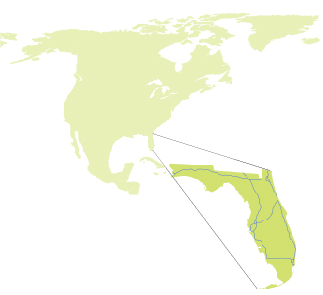Back to Strategic Freight Plan Web Document
Combined domestic and international United States freight movements are projected to grow by over 45 percent by 2040. Freight activity at our nation’s seaports is anticipated to more than double during this same time period. The ever-increasing globalization of U.S. business markets is a major cause of this dramatic growth, placing increasing demands on the existing freight network.
The nation’s transportation network serves as a large “rolling” warehousing facility made up of trucks, trains, ships, and planes that deliver goods “just in time.” As inventory systems become more efficient in responding to market demands, more products will be “stored” on the freight network than ever before.
The ever-increasing freight activity highlights the need to address issues such as national security, aging infrastructure, intermodal access, capacity constraints, and increasing congestion. Sensitivity to community livability issues, particularly in our residential, office, and mixed-use areas, is another important consideration in the analysis of solutions that provide good freight accessibility to intermodal, distribution, and industrial centers.
National Freight Policy

Federal legislation requires metropolitan planning organizations (MPOs) to take into consideration economic development and freight movement in long-range plans and short-range transportation improvement programs for their regions. It has long been recognized that freight issues transcend local, regional, state, and international boundaries. National level freight planning and policy is necessary to deal with issues such as the expansion of the Panama Canal or increasing American exports. The scale of freight issues is a strong argument for greater federal involvement in this area of transportation.
The current federal transportation bill, MAP-21, was signed into law in June 2012. MAP-21 places a greater emphasis than prior legislation on the federal role in freight transportation and includes several provisions to facilitate freight transportation across state and national boundaries. The legislation mandates the identification of a National Freight Network and regular reports on its condition and performance by the Secretary of the United States Department of Transportation (US DOT).
 The National Freight Network includes a primary network of 27,000 miles of existing highways that are crucial to the movement of freight. An additional 3,000 miles of highway may be designated by the Secretary as critical to the future movement of freight. Intermodal connectors that provide access to important rail, port, and airport facilities represent another key component of the National Freight Network. Railroads are not included in the Network, given the largely private ownership of those assets. The Network must be redesignated every ten years to reflect current trends and conditions.
The National Freight Network includes a primary network of 27,000 miles of existing highways that are crucial to the movement of freight. An additional 3,000 miles of highway may be designated by the Secretary as critical to the future movement of freight. Intermodal connectors that provide access to important rail, port, and airport facilities represent another key component of the National Freight Network. Railroads are not included in the Network, given the largely private ownership of those assets. The Network must be redesignated every ten years to reflect current trends and conditions.
The National Freight Strategic Plan must be established within three years and will be updated every five years. The plan will assess the condition and performance of the freight network, identify key highway bottlenecks, forecast future freight volumes, and assess barriers to improve freight transportation performance. The Secretary is required to report on the conditions and performance of the National Freight Network every two years.
While a proposed freight funding program was not included in the final bill, the bill does provide an incentive for states to prioritize projects that improve freight movement. While the federal government typically funds 80 percent of projects that are eligible for federal aid, in some instances, such as interstate maintenance, the federal government has historically paid a higher share. One of the most important provisions of MAP-21 for states and metropolitan planning organizations is that the bill authorizes a 90 percent federal share to fund freight projects, which increases to 95 percent if the project is on the Interstate Highway System. To be eligible for the higher federal share a project must be identified in a state freight plan and make progress towards performance targets for freight movement.
The Federal Highway Administration’s (FHWA) more substantial role in what has traditionally been a collaborative process between state DOTs and MPOs is as yet an untested process. While the federal agency’s primary role is to provide oversight of the planning, programming, and construction process related to federal-aid highways, the current trend may lead to FHWA playing a more active role in the selection of freight projects. How the new federal role plays out remains to be seen, but MAP-21 will certainly play a key role in the evolution of the nation’s freight policy.
